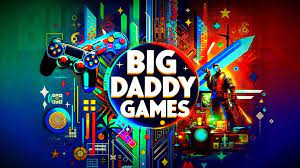The term “Big Daddy” often conjures up images of a towering figure in a diving suit, wielding a massive drill, and emerging from the depths of the underwater city of Rapture. This iconic character is one of the central figures in the critically acclaimed video game series BioShock, developed by Irrational Games and released in 2007. BioShock revolutionized the gaming landscape with its unique blend of narrative depth, atmospheric design, and moral complexity. This article explores the concept of big daddy game its role in the game, and the broader implications it has for the gaming industry.
The Origins of Big Daddy
In the world of BioShock, Big Daddies are genetically modified beings created to protect Little Sisters, young girls who have been altered to harvest a substance called ADAM. ADAM is a powerful resource that grants users unique abilities, but its extraction from the ocean’s sea slugs has dire consequences for the girls involved. Big Daddies are the enforcers of Rapture, acting as both guardians and monsters. Their design draws heavily from the aesthetics of the early 20th century, with their vintage diving suits and large, bulbous helmets, evoking a sense of both nostalgia and horror.
Gameplay Mechanics
Big Daddies serve as significant gameplay elements in BioShock. They are formidable foes, challenging players with their immense strength and resilience. Engaging a Big Daddy requires strategic thinking and careful planning, as they can inflict serious damage. Players often find themselves weighing the risks of confronting these titanic figures in order to rescue or harvest the Little Sisters under their protection. This moral choice adds depth to the gameplay, forcing players to confront the consequences of their actions and the ethical implications of their choices.
Themes and Symbolism
The presence of Big Daddies in BioShock raises profound questions about protection, parental instincts, and the nature of monstrosity. They embody the duality of being both a guardian and a threat, reflecting the complexities of human nature. This juxtaposition invites players to consider the motivations behind their actions and the potential for both good and evil within themselves.
The game also explores themes of addiction and the price of power through the lens of ADAM. The Big Daddies, once human, have been transformed into creatures that exist solely to serve the needs of the Little Sisters and the corrupted society of Rapture. This transformation symbolizes the loss of humanity in the pursuit of power and control.
Cultural Impact
The cultural impact of Big Daddy extends beyond the BioShock series. The character has become a recognizable symbol in the gaming community and beyond, often referenced in discussions about video game design and storytelling. The unique blend of horror, nostalgia, and ethical complexity that Big Daddies embody has influenced the development of other games, prompting creators to explore similar themes in their narratives.
Moreover, the character has inspired various forms of media, from fan art to cosplay, demonstrating the lasting impression that Big Daddies have left on popular culture. The design and concept have become a touchstone for discussions about character development and the emotional weight of storytelling in video games.
Conclusion
Big Daddy is more than just a character in a video game; it is a symbol of the intricate narrative possibilities that gaming can offer. Through its exploration of themes such as protection, morality, and the consequences of power, BioShock and its iconic Big Daddy character have left an indelible mark on the landscape of video gaming. As the industry continues to evolve, the legacy of Big Daddy serves as a reminder of the potential for video games to tell profound stories that resonate with players on multiple levels.




